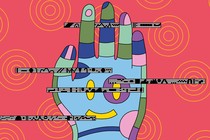USA Swimming Has a Secret Weapon: Linear Algebra
9 min read
This article was originally published by Quanta Magazine.
In the fall of 2014, Andrew Wilson took a front-row seat in Ken Ono’s number-theory class at Emory University, in Atlanta. Wilson was not only double-majoring in applied math and physics; he was also a walk-on member of Emory’s swim team. Ono took an interest in Wilson’s ambitions. “We thought that, together, maybe we could use our interest in mathematics to help him improve as a swimmer,” Ono says.
Ono, who typically studies abstract patterns in numbers and special functions called “modular forms,” began collecting and analyzing acceleration data from Wilson and other Emory swimmers to identify and quantify their weaknesses. “It got to the point where I could just see what an athlete was doing without actually watching them swim,” he says.
Within two years, Wilson had won national collegiate championships; he would go on to earn a gold medal at the 2021 Tokyo Olympics. By then, Ono was at the University of Virginia, where he worked alongside Todd DeSorbo—the head coach for both UVA swimming and the U.S. Olympic women’s swim team. Ono will join the Olympic-team staff in Paris later this summer as a technical consultant. “I feel like we’re all in this together, trying to make something new,” he says.
Jordana Cepelewicz of Quanta spoke with Ono about how he has used mathematics to help swimmers make it to the Olympic stage. The interview has been condensed and edited for clarity.
Jordana Cepelewicz: So how successful has your program been?
Ken Ono: The results speak for themselves. A bunch of our people went to the Olympics in 2021. At the most recent World Championships, every female American gold medalist in individual events was a UVA athlete. Kate Douglass showed up here at UVA a few years ago, swimming the 200-meter breaststroke in two minutes and 30 seconds. Now she’s the American record holder, with a time of two minutes, 19.30 seconds. She just broke the U.S. Olympic trials’ all-time record, and she’s a favorite to win the Olympics this year.
Five UVA athletes, including Kate, just became U.S. Olympians—one-fourth of the U.S. women’s team! Gretchen Walsh won the 100-meter butterfly, setting the world record. Paige Madden got second in the 400-meter freestyle, right after Katie Ledecky; Paige is now a two-time Olympian.
Cepelewicz: What was your initial goal?
Ono: If you take the swimming out of it, we have Newton’s laws of motion. Those are the equations that we work with. We wanted to carefully understand the implications of Newton’s laws applied to swimmers in the pool. How do we measure acceleration, deceleration, and drag? Those were the first questions that we had to answer in the development of our tools.
Cepelewicz: How did you get started?
Ono: It began innocently enough—with Saran Wrap and accelerometers designed for shark tracking that I bought from marine-technology outfits. We didn’t know what we were doing. I needed to fasten these accelerometers to swimmers. So I got Saran Wrap and wrapped these sensors around their waists super tight. Some swimmers were just too powerful, so the sensors never stayed inside the Saran Wrap. So now I have these belts that my wife made that have a little pocket for the sensors.
Cepelewicz: It took time to get this experimental setup to work.
Ono: It was hard to even get the data. Our protocols for waterproofing were funny. They looked like Boy Scout instructions: “Wrap the accelerometer in tissue paper, burrito style.” And we discovered that some of our sensors could fail. They were very sensitive to light. So we had to fashion little plastic UV covers to protect them.
It wasn’t that long ago that we were that amateur. We’ve come a long way since then.
Cepelewicz: What kind of data do you collect?
Ono: I record swims with high-definition video, and with accelerometers and force paddles. I’ve also assembled a very large battery of tests that look nothing like swimming. I test how athletes swim when they take their kicks at different tempos. I test how flexible they are, how tired they get after certain tasks. I want to get a good sense of what their capabilities will be.
During these swims and tests, I measure the force that is generated in three-dimensional space by the athlete’s legs, by undulation at the hips, and by their hands. High-definition video generally captures only 24 screenshots per second. Each sensor gives me 512 force vectors per second. They can reveal things you’ll never see in the video.
Cepelewicz: Like what?
Ono: One subtle thing that we picked up on very easily—and you wouldn’t see it with your eyes—is how an athlete might change the execution of their kicks three strokes away from the wall, causing them to lose time.
That’s just one example. Using our data, we perform a very careful and serious analysis of each individual swimmer. We get a breakdown of the swim. My first tests look for where you’re decelerating for no good reason. Some athletes really struggle with their transitions, coming into and coming out of a wall. Or they might need to correct their head placement in a streamline, an underwater glide where they’re not actually swimming. At the Olympic and World Championship level, where races might come down to hundredths of a second, these things matter.
Once we wipe out those sources of deceleration, then we look at what limbs are doing in motion. As you fatigue, how is your stroke falling apart? Are you maximizing the percentage of force you generate so that your body swims in the right direction?
Cepelewicz: How do you extract this information from your data?
Ono: Some of it is as simple as linear algebra. When an athlete takes a stroke, they’re generating force that can be pointed downward, upward, to the right or to the left, or in the direction of the swim. We use linear-algebra techniques to calculate the percentage in each of those directions.
Would you believe that we’ve never measured anyone who was more than 60 percent efficient in the four strokes —freestyle, breaststroke, butterfly, and backstroke? It’s basically impossible. In April, we had Paige Madden wear force sensors, and we modeled the path of her hand as she took a stroke and recovered. We computed that in the first lap of her swim, 59.1 percent of the force her right hand generated was propelling her in the direction she wanted to go. That is awesome.
But by Lap 8, only 42.1 percent was propelling her forward. Not only was she getting more tired, but her execution was starting to fall apart. So using just these insights from linear algebra, we gave her some cues about how to swim the race differently. And the next day, on Lap 8, she was close to 50 percent. One month later, she swam her personal best.
Our paddles don’t let you lie. We don’t let you fool yourselves.
Cepelewicz: And this math works the same for all four strokes?
Ono: I’ve never been able to get our force sensors to work for breaststroke. There’s too much going on. I get data, but I can’t make heads or tails out of it.
Cepelewicz: Why is breaststroke harder to deal with?
Ono: I wish I could tell you. I mean, in breaststroke, your hands are doing much more in terms of in-sweep, out-sweep. That’s a hard problem. But I don’t know.
Cepelewicz: You also use your data to make predictions and develop race strategies, right?
Ono: That’s right. We can use all our data to build a “digital twin” of an athlete. Digital twins are mathematical models of complicated systems and processes, such as the spread of COVID or the migration of populations of animals—things that vary over time.
Except, in my case, it really is a digital twin. It looks like an EKG, going tch, tch, tch, and it’s developed based on the data I’ve captured about an athlete’s movements. I can model how they will race under different conditions. Over the last seven or eight years, I’ve collected thousands of swims from more than 100 top athletes. So I can race your digital twin against the database, make adjustments, and assemble the optimal formula you should use for your race—how many kicks do you take off the dive; where do you place your hands coming into a turn; how many breaths do you take, and in what pattern? It’s curated per athlete, per inch. We can say: If you swim using this formula, you’re going to do the 100-yard backstroke in under 48 seconds.
These simulated races between digital twins might show a competitor two or three feet ahead of you at a particular point in time—but I don’t want you to worry about that, because you’ll see that in Leg 3, they’re going to slow down, and you’ll catch up.
If you watch footage of NCAA races, you’ll probably get a sense that the UVA athletes seem to have this extra swagger, like they cannot lose. And there is of course truth to that, because they are winning all the time. But one of the unexpected benefits of our work is, in their mind, they think, If I swim that formula, I win the race.
Cepelewicz: What challenges have you had to overcome while doing these analyses?
Ono: There are several. For example, the question of orientation in three-dimensional space is critical. Your body is constantly in motion. So how do we decide when the force is actually going in the direction of the swim? It’s not that easy. We had to make sure that we were basing our analyses on the right orientations.
Accelerometer data is very noisy. Accelerometers are very sensitive. So some of the mathematics that’s deeply theoretical involves how you smooth the data to dampen out the noise. I need to know when a peak is meaningful. I have to be able to look at a stream of accelerometer data and say: This is where you’re breathing to the right, but you lifted your head up a little too much, or this is how much force you generated in the instant you moved off the wall, before you started decelerating. I need that level of sensitivity. I need to have confidence that the numbers I get mean what I think they mean.
Figuring out the correct method to smooth out this noisy data was probably the most sophisticated type of mathematics that we had to do, and that’s very secret.
Cepelewicz: What have you taken away from this experience?
Ono: We haven’t discovered or invented any new math. We’re not doing rocket science here. What I think this proves is that the attention to detail that comes from thinking analytically has merit. I want to find the stuff no one else has, and use Newton’s laws, together with experimentation and some linear algebra, to help craft the best performances for the athletes we work with.
There are still coaches that don’t take us seriously. But that’s not my job. My job is to help these athletes improve as swimmers, and to help get as many of them on the Olympic team as we can.
I’m a pure mathematician by training. That can be rather lonely. So this is perhaps the one time in my life where my training as a mathematical scientist seems to matter to a large group of people. It has been a dream ride.



